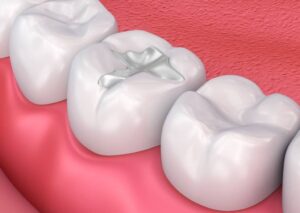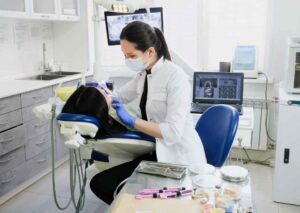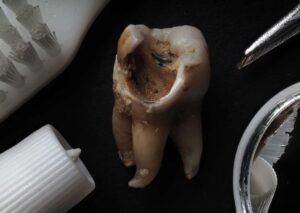If you’re wondering what’s the best way to fix crooked teeth, both braces and aligners offer effective solutions. But, the right choice usually falls on your dental condition, budget, and lifestyle needs. At our dental clinic in Kepong, we offer modern orthodontic care tailored for each patient, whether you’re dealing with mild misalignment or severe bite issues.
What Causes Crooked Teeth?
Crooked teeth can form at any age. For most people, it starts in childhood due to genetics, thumb-sucking habits, or premature tooth loss. But even adults can experience shifting teeth later in life.
Crooked Teeth in Kids
Children’s teeth are especially vulnerable to crowding and spacing issues because their jaws are still growing. If baby teeth fall out too early, or if there’s no room for adult teeth to erupt, crooked alignment is likely. Regular dental checkups can help spot these signs early and guide proper intervention.
What Treatment Options Are The Best Way To Fix Crooked Teeth?
When it comes to correcting crooked teeth, most people land on two choices – braces or aligners. Both are effective, but they work in different ways and suit different types of cases.
Braces — Tried and True for All Types of Misalignment
Traditional braces remain the most effective option for moderate to severe dental misalignments. They’re ideal for treating:
- Teeth that are rotated or overcrowded
- Major bite issues like overbite, underbite, or crossbite
- Severe gaps between teeth
- Complex jaw alignment problems
Braces use a system of metal or ceramic brackets bonded to your teeth, connected by a thin archwire. This wire exerts continuous, gentle pressure over time, guiding your teeth into the correct position. It’s ideal for treating complex issues like severe crowding, rotated teeth, and bite problems like overbite or underbite.
There are different types of braces for overbite and crooked teeth, including:
- Metal braces: The most affordable and effective option for most cases.
- Ceramic braces: Tooth-coloured brackets that blend in better.
- Self-ligating braces: Require fewer adjustments and are easier to clean.
Fixed braces are particularly recommended for younger patients or adults with more advanced misalignment. They can’t be removed, which means they’re always at work, but they do require proper brushing habits to avoid plaque buildup.
Aligners — A Clear and Removable Alternative
Clear aligners like Invisalign are a discreet and removable solution best suited for:
- Mild to moderate crowding or spacing
- Adults and teens concerned about the look of metal braces
- Patients with a strong commitment to wearing aligners at least 20-22 hours per day
Removable or clear aligners to straighten teeth, such as Invisalign, offer a more discreet solution for those with mild to moderate alignment issues. These clear plastic trays are custom-made to fit your teeth and changed every one to two weeks to continue the gradual movement.
They’re popular with adults and teens who want to avoid the look of traditional braces. Because they’re removable, you can take them out when eating or brushing. Just make sure to wear them at least 20-22 hours a day for optimal results.
At Fresh Dental Kepong, while we don’t offer any Invisalign products under our services, we do offer another affordable alternative called Angel Aligners. This type of invisible braces works just the same as Invisalign and is perfect for those who want to fix their crooked teeth on a budget.
 How Braces and Aligners Fix Crooked Teeth
How Braces and Aligners Fix Crooked Teeth
Crooked teeth don’t just affect your smile, they can also impact your bite, jaw health, and how easy it is to clean your teeth. Let’s break down how both braces and aligners correct tooth alignment at a biological level.
Braces — Applying Controlled Pressure with Wires and Brackets
Braces are a time-tested solution that correct both mild and complex dental misalignments through consistent, controlled force. Each bracket is bonded to a tooth using dental adhesive and connected with an archwire, which is periodically adjusted by your dentist to guide your teeth into proper alignment.
Here’s how braces work:
- Biomechanics in Action: Braces apply continuous pressure to the periodontal ligament. This is the connective tissue that holds each tooth in its socket. Applying constant pressure causes the bone around the tooth to remodel: bone dissolves on one side of the tooth and forms on the other, allowing the tooth to move gradually.
- Customisable Control: Your dentist or orthodontist can adjust individual brackets or add elastics to fine-tune movement for precise results. This makes braces highly effective for treating rotated teeth, large gaps, bite issues (overbite, underbite, crossbite), and crowding.
- Always Working: Because braces are fixed appliances, they’re always exerting force on your teeth, even while you sleep or eat. This makes treatment efficient, especially for patients who may struggle with compliance in removable systems.
Monthly follow-ups are essential to monitor progress and make incremental adjustments. Over time, this constant pressure realigns your teeth and improves bite function.
Aligners — Gradual, Removable Trays with Smart Movement
Clear aligners, such as Invisalign, are made from transparent medical-grade plastic. These trays are custom-fitted to your teeth and come in a series, each tray slightly different from the last to gradually shift your teeth over time.
Here’s how aligners work:
- Digital Treatment Planning: The entire movement plan is designed in advance. Your dentist maps out the current and ideal positions of your teeth and creates a sequence of aligners that nudge them along this path.
- Gentle Force and Precision: Each aligner moves the teeth up little by little, focusing on specific teeth at each stage. Attachments (small tooth-colored dots) may be bonded to teeth to increase grip and control for complex movements.
- Bone Remodeling and Ligament Tension: Like braces, aligners rely on controlled tension to remodel the jawbone and periodontal ligaments. However, because they exert force over a smaller surface area and for shorter durations (since they’re removable), they require strict discipline, usually 20-22 hours per day.
- Great for Aesthetics and Mild Cases: Aligners are ideal for adults or teens with mild to moderate crowding or spacing issues, and for those concerned about aesthetics or dietary restrictions from braces.
Treatment timelines can range from 6 months to over 18 months, depending on severity and patient compliance.
How Long Does It Take to See Results?
On average, most orthodontic cases take 12 to 24 months to complete. However, several factors affect treatment duration:
- Severity of Misalignment: Mild spacing or crowding can be corrected in as little as 6 months. Severe bite issues or rotated teeth can take up to 2 years.
- Age and Bone Density: Younger patients usually respond faster to treatment because their bone structure is more adaptable.
- Type of Appliance: Fixed braces tend to move teeth faster and are more effective for complex cases. Aligners, while efficient, can slow down treatment if not worn consistently.
- Patient Discipline: Aligners require compliance. Inconsistent wear can stall progress or require retreatment.
At Fresh Dental Care Kepong, we offer personalised consultations to determine the best way to fix crooked teeth based on your case. We use scans, X-rays, and visual assessments to help you understand how long your treatment will take, what to expect, and what results you can realistically achieve.
This professional approach ensures both function and aesthetics are restored, giving you not just a straighter smile, but one that’s healthy, balanced, and built to last.
Which Is the Best Way to Fix Crooked Teeth?
If your case is complex, for example, a severe overbite and crooked teeth, braces might offer more predictable and faster results. If your main concern is cosmetics or convenience, aligners may suit you better.
At Fresh Dental Care Kepong, we offer both options as part of our personalised treatment plans. Whether you need teeth alignment braces or removable aligners to straighten teeth, we’ll walk you through what’s best for your unique case, based on clinical assessment and long-term results.
The Pros and Cons of Both Options
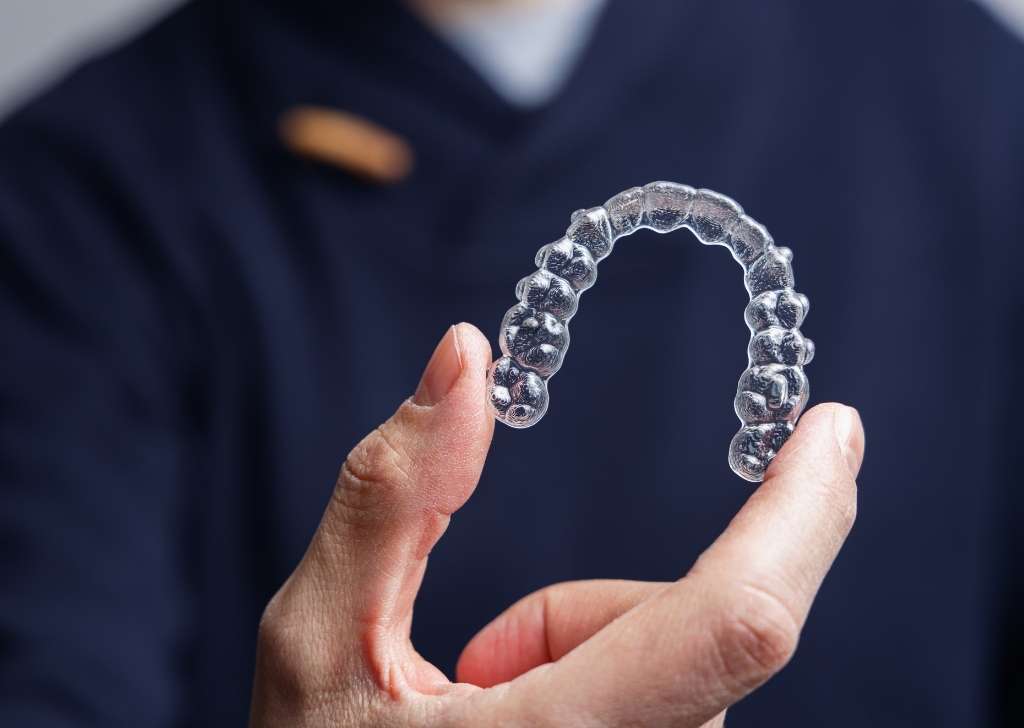
Pros of Aligners
Aligners are discreet, removable, and smooth. This makes it ideal for adults or teens who want to straighten their teeth without the “metal-mouth” look. They make brushing, flossing, and eating much easier because you simply remove the trays when needed.
Each aligner set is mapped out via comprehensive examination which involves a thorough evaluation of the teeth, bite, jaw alignment, and facial structure. This modern method appeals to those who value comfort, flexibility, and aesthetics. At Fresh Dental Care Kepong, we tailor each clear aligner plan to your dental goals and lifestyle.
Cons of Aligners
Discipline is key. Aligners must be worn 20-22 hours a day to be effective. Skipping wear time, forgetting to put them back in after meals, or losing trays can delay progress.
They’re also not ideal for very complex cases involving major jaw shifts or severe overcrowding. For those situations, braces offer more control and efficiency. Additionally, aligners can be more expensive upfront, depending on the severity of your case and the brand used.

Pros of Braces
Braces are the go-to solution for correcting even the most complex orthodontic issues. Whether you have severely crooked teeth, large gaps, an overbite, or teeth that haven’t erupted properly, braces offer precision and strength. They’re fixed to your teeth, which means they’re always working and pose no risk of forgetting to wear them.
They’re also versatile. At Fresh Dental Care Kepong, you can choose from metal braces, ceramic braces, or self-ligating brackets, each with different aesthetic and comfort benefits. Plus, braces often deliver faster results for major alignment problems compared to aligners.
Cons of Braces
The most obvious downside is appearance. Traditional braces are visible, which might make some patients feel self-conscious, especially adults. While ceramic and clear brackets help reduce visibility, they’re still noticeable.
Braces also come with dietary restrictions. Sticky, crunchy, or hard foods can damage wires and brackets. Oral hygiene requires extra care, especially during brushing and flossing around brackets takes more time. Adjustments may cause soreness for a few days after each visit.
To Summarize:
Feature | Braces | Aligners |
Visibility | Visible (metal or ceramic options available) | Virtually invisible |
Removability | Fixed to teeth, cannot be removed | Removable for eating and brushing |
Treatment Scope | Ideal for complex and severe misalignment | Best for mild to moderate alignment issues |
Comfort | May cause discomfort from wires and brackets | Smooth plastic trays with fewer abrasions |
Are Crooked Teeth Considered Unattractive?
In today’s world, perceptions of beauty vary greatly depending on culture and personal preference. In Malaysia, as in many parts of the world, straight teeth are often linked with health, cleanliness, and confidence. This has made orthodontic treatments more popular, especially among working professionals and young adults who want to improve their appearance and self-esteem.
However, not everyone views crooked teeth as undesirable. In countries like Japan, for instance, slightly crooked teeth — especially the upper canines, known as “yaeba” , are sometimes seen as charming or youthful. This aesthetic has even gained traction in fashion magazines and pop culture, with some individuals choosing to accentuate, not fix, their dental misalignment.
Despite these cultural differences, the appeal of a straighter smile has become increasingly common due to the global influence of media, K-dramas, Hollywood, and social platforms like Instagram and TikTok. In Malaysia, many choose to undergo braces or aligners not just to meet beauty expectations, but also to prevent long-term dental problems like bite issues, jaw tension, or uneven wear on the teeth.
If you’re wondering whether to correct your crooked teeth for aesthetic reasons, we recommend a personalised orthodontic consultation at our dental clinic in Kepong, where we consider both function and appearance in our treatment approach.
How Much Do Braces and Aligners Cost in Malaysia?
In Malaysia, braces typically range from *RM 5,000 to RM 10,000, depending on the type (metal, ceramic, self-ligating) and clinic location. Invisalign or clear aligners often start at RM 9,000 and can go beyond RM 15,000 for full treatment.
During your first visit at Fresh Dental Care Kepong, we will provide a detailed breakdown. If you’re unsure which is best for your budget and condition, start with a simple consultation with us to evaluate your alignment needs.
Disclaimer: The prices stated reflect general market estimates in Malaysia and may not represent the final costs at Fresh Dental Care Kepong. For accurate pricing tailored to your case, please contact us directly for a personalised quote.
What to Expect During Treatment at Our Dental Clinic in Kepong
From your first orthodontic consultation in Kepong, we guide you every step of the way. The process starts with dental X-rays and scans to understand your tooth positioning and jaw structure. These are essential in planning your braces or aligner treatment.
You’ll be advised on how long your treatment will take, expected results, and costs. Throughout your journey, we monitor your progress and make adjustments as needed. Whether you’re a working adult or a teenager seeking teeth alignment, our clinic ensures comfort, clarity, and real results.
FAQ – Straightening Crooked Teeth in Malaysia
Are crooked teeth normal?
Yes, crooked teeth are extremely common, especially during childhood as baby teeth fall out and permanent ones come in. However, just because they’re common doesn’t mean they should be ignored. Misaligned teeth can lead to bite issues, gum disease, and even jaw discomfort over time. The good news? Whether you need braces for slightly crooked teeth or full orthodontic correction, modern treatments are more accessible than ever.
Can crooked teeth be fixed naturally?
Unfortunately, crooked teeth don’t usually straighten out on their own, especially once adult teeth are fully developed. There’s no scientifically proven method to fix crooked teeth naturally without orthodontic assistance. While minor crowding can sometimes be managed with cosmetic options like contouring or veneers, mechanical intervention like aligners or braces is usually needed to achieve lasting results.
What causes crooked teeth in kids?
There are a few common culprits behind crooked teeth in kids: genetics, thumb sucking, prolonged pacifier use, or even premature loss of baby teeth. Poor jaw development can also lead to crowding. If caught early, certain issues can be corrected with early orthodontic treatments or space maintainers. At our dental clinic in Kepong, we offer assessments specifically for children to catch problems before they become severe.
Are crooked teeth considered unattractive?
Beauty is subjective, and some people find a slightly crooked smile charming or unique. However, in many cultures, straight teeth are associated with health, confidence, and good hygiene. From a dental perspective, the concern isn’t just aesthetics – crooked teeth can affect your bite, make cleaning difficult, and lead to long-term oral health issues. So while attractiveness is personal, many choose to straighten their teeth for both cosmetic and functional reasons. If you’re unsure where to start, we recommend visiting our Orthodontic Consultation in Kepong to explore your options.
Are crooked teeth genetic?
Yes, genetics can play a major role in how your teeth develop. If your parents had crooked or crowded teeth, there’s a higher chance you might too. Other factors like jaw size, extra or missing teeth, and oral habits can also contribute. Regardless of the cause, crooked teeth can be corrected with the right treatment, whether it’s fixed teeth alignment braces or clear aligners.
Book Your Consultation with Fresh Dental Care Kepong Today
Whether you’re ready to straighten your teeth or just exploring your options, our team at Fresh Dental Care Kepong is here to help. We combine modern orthodontic solutions with personalised care to make your treatment comfortable, effective, and affordable.
Your journey to a healthier, more confident smile starts here. Contact us today on WhatsApp or book your appointment online to get started.

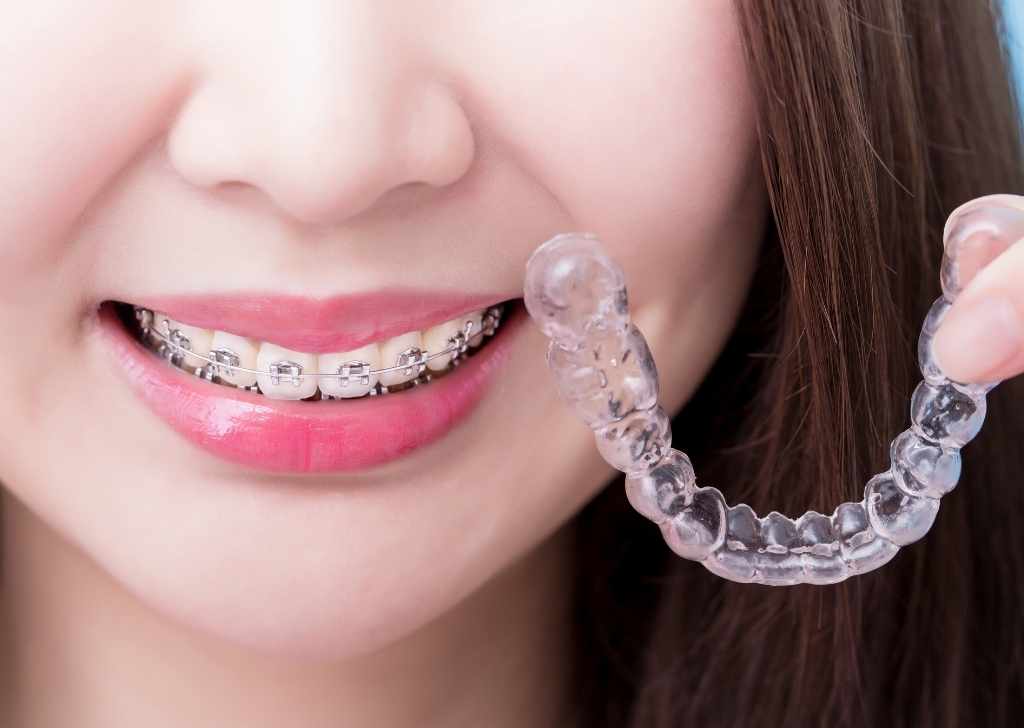
 How Braces and Aligners Fix Crooked Teeth
How Braces and Aligners Fix Crooked Teeth
